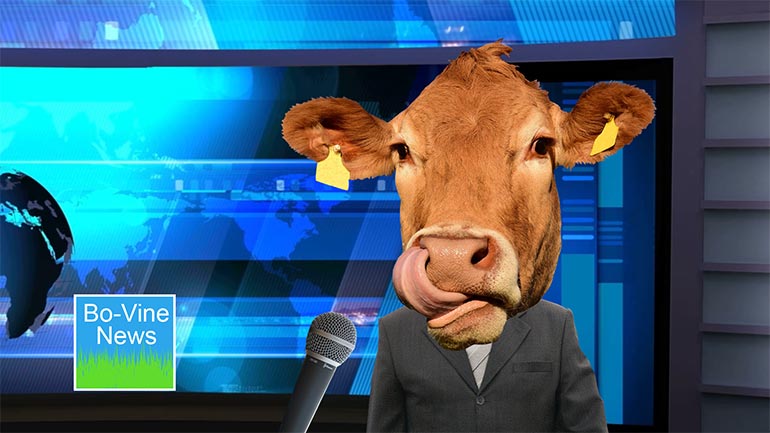ShmoopTube
Where Monty Python meets your 10th grade teacher.
Search Thousands of Shmoop Videos
Finance: What is the Price-To-Earnings Ratio? 217 Views
Share It!
Description:
What is the price-to-earnings ratio? It's the price of the stock divided by its earnings. Stock price: $14; earnings: $1. The P-E ratio then is 14.
- Social Studies / Finance
- Finance / Financial Responsibility
- Life Skills / Personal Finance
- Finance / Finance Definitions
- Life Skills / Finance Definitions
- Finance / Personal Finance
- Courses / Finance Concepts
- Subjects / Finance and Economics
- Finance and Economics / Terms and Concepts
- Terms and Concepts / Accounting
- Terms and Concepts / Careers
- Terms and Concepts / Company Management
- Terms and Concepts / Education
- Terms and Concepts / Investing
- Terms and Concepts / Stocks
- College and Career / Personal Finance
Transcript
- 00:00
Finance a lash up What is the price to earnings
- 00:05
ratio All right You just inherited a thousand shares of
- 00:09
whatever dot com which trades publicly for twenty bucks a
- 00:12
share And you also inherited a thousand shares of pepsi
- 00:17
And that stock trades publicly for forty bucks a share
Full Transcript
- 00:20
Your sister got the pewter bunny rabbit collection but well
- 00:24
you can live with that fact that you take the
- 00:26
thousand shares All right so what on earth do you
- 00:28
do now What do you do with these things Well
- 00:31
you have no idea Because you're an orthodontist and you
- 00:34
have your hands in wet mouths all day Well if
- 00:37
you'd inherited a truckload of floss well then we totally
- 00:40
know what to do with it All right Will you
- 00:42
check out the brokerage reports from morgan stanley on whatever
- 00:46
dot com it has one hundred million dollars in revenue
- 00:49
and no earnings no profits Well what Our earnings again
- 00:54
Oh yeah This revenues from whatever's app sales at a
- 01:00
buck Each one hundred million of them minus its cost
- 01:03
of goods sold Well it had to pay fifty million
- 01:05
bucks to apple and others to get it saps out
- 01:08
There well then it had a small army of engineers
- 01:11
and product people on payroll to build The app will
- 01:13
subtract another thirty million box then it had rent in
- 01:17
legal expenses and health care insurance and office things like
- 01:20
computers and app servers All of that added up to
- 01:23
be twenty million dollars and because of the accounting laws
- 01:25
you have to subtract it all last year Even though
- 01:27
the app it lasts a long time i had to
- 01:29
take it all off the top It had a hundred
- 01:32
million dollars in revenues and a hundred million dollars in
- 01:34
expenses and no earnings but it has fifty million shares
- 01:39
outstanding which when multiplied by twenty bucks a share that's
- 01:43
What the market's paying for it twenty dollars share It
- 01:46
gives it a market value of a billion bucks Take
- 01:49
the shares outstanding kinds of market price to get what
- 01:52
the company's worth at least according to wall street buying
- 01:54
and selling the shares Oh it has fifty million dollars
- 01:56
in cash on the books and no debt so the
- 01:59
market is valuing the equity of the company at nine
- 02:04
hundred fifty million dollars meaning it's valuing the earnings power
- 02:08
Of the company in the future in his hands at
- 02:11
nine Fifty alright so you wonder forth an honest and
- 02:15
would be flossed cellar that you are How khun something
- 02:18
with no profits no earnings be worth a billion dollars
- 02:24
Well you read through the report which notes that the
- 02:26
revenues are growing really fast like one hundred percent a
- 02:29
year and that the market whoever that is believes that
- 02:34
the company will have two hundred million in revenues next
- 02:37
year and for hundred million the following year and on
- 02:40
four hundred million of revenues it will have one hundred
- 02:43
million dollars in net earnings It'll also produce fifty million
- 02:48
in cash along the way so in two years it
- 02:50
will have one hundred million dollars in cash on the
- 02:52
books and no debt If you go back and think
- 02:54
about that that you could subtract one hundred million from
- 02:57
the billion and it's the nine hundred million of equity
- 03:00
value back we'll get All right So you ponder that
- 03:05
means that today at a billion dollars i'm paying if
- 03:08
i buy it at twenty bucks a share i'm paying
- 03:12
nine times the earnings expected in two years Two years
- 03:17
From now for the equity value of this company huh
- 03:22
Well is nine times earnings cheap expensive Attaway frame the
- 03:26
notion Well the average snp company trades it about sixteen
- 03:31
times two years out earning something like that But the
- 03:34
average company is totally different from whatever dot com The
- 03:37
average company is like a caterpillar Tractors or well pepsi's
- 03:41
kind of average Wells fargo kind of average Well it's
- 03:46
a mature company unlike whatever dot com and the people
- 03:49
who write for shmoop but not mature way No Well
- 03:52
caterpillar has been around for a century has a stable
- 03:55
set of fires And you know what are the odds
- 03:58
People still need tractors to mine food in five years
- 04:01
You have pretty good odds whereas whatever dot com might
- 04:05
have totally evaporated by them Yeah well what about revenue
- 04:09
growth Yep Caterpillars matured gross revenues that only about eight
- 04:12
percent a year in a good year And it has
- 04:15
a lot of capital expenses Well every decade or so
- 04:18
it needs a new smelting plant to smelt engines and
- 04:21
redo its manufacturing process Tio you know keep up with
- 04:25
the joneses or rather the blues or chains Oh and
- 04:29
it pays a small dividend yeah helps well tough company
- 04:32
to compare with whatever dot com but caterpillar trades at
- 04:35
about sixteen times thiss years earnings and it'll grow earning
- 04:38
slowly and you note that it trades at fifteen times
- 04:42
and extras projected earnings and fourteen times the following year's
- 04:45
earnings So that's interesting caterpillar trades at a hire multiple
- 04:51
on two year forward earnings than whatever dot com who
- 04:53
does that make sense It's nowhere near ist sexy a
- 04:56
company but it must be the risk the market is
- 05:00
discounting a lot of risk because the odds that whatever
- 05:03
dot com doesn't make its four hundred million dollars in
- 05:07
projected app sales in two years well that's pretty good
- 05:11
could earn a lot less so you know you get
- 05:14
it You'll keep your shares of whatever dot com if
- 05:16
you believe they'll really hit the one hundred million in
- 05:19
earnings on four hundred million of revenues two years from
- 05:22
now and you'll dump the shares if you don't Well
- 05:25
what about pepsi Well that's company that financially sounds a
- 05:27
lot more like caterpillar than whatever dot com the risk
- 05:31
of people still drinking highly addictive caffeinated fizzy water and
- 05:35
salted potatoes in five years left pepsi sells a lot
- 05:38
of data chips Yeah really good odds Pepsi grows a
- 05:41
bit faster than caterpillar it has a bit higher margins
- 05:44
and it acquires competitors all the time dipping its toes
- 05:48
even outside the food and snacks arena So it has
- 05:50
a really big playing field that it plays on by
- 05:53
a lot of things and there's that global warming thing
- 05:56
People drink more when it's hot right So pepsi learn
- 05:59
about two bucks a share this year and it trades
- 06:02
that twenty times earnings or forty dollars Well because pepsi
- 06:05
has long term distribution contract with grocery stores and vending
- 06:09
machines and theme parks and other weird places it sells
- 06:12
its wears well pepsi has a pretty highly predictable earning
- 06:16
stream So when peopie tells the street that it'll learned
- 06:20
to twenty next year in two forty the following year
- 06:23
what likelihood Very high that it hits those numbers are
- 06:26
maybe does little better because it has a history of
- 06:28
under promising and over delivering and on its two bucks
- 06:31
forty and earnings at forty dollars pep trades at a
- 06:34
bit of a premium to the stock market overall that
- 06:37
to forty and earnings on a forty dollars a share
- 06:39
price today means that peopie trades at sixteen point six
- 06:43
times two years out Earnings well the overall stock market
- 06:47
trades at sixteen times this year's earnings because well earnings
- 06:50
are growing It trades it about fifteen times earnings two
- 06:53
years out Why all of these crazy comparisons That air
- 06:57
probably confusing you well because price to earnings ratios are
- 07:01
just one measure of the value of a company relative
- 07:05
to everything else The p e ratio is just one
- 07:09
metric investors used to measure the value of a company
- 07:13
and the basic foundation of the idea is simple If
- 07:16
you invest a dollar in a company today you want
- 07:19
to be paid back either by getting cash distributions coming
- 07:23
to you That overtime are much greater than that dollar
- 07:26
you put in like big dividends and so on Or
- 07:29
you want the asset itself to simply appreciate it A
- 07:32
healthy fast pace about eight dollars worth of stock Well
- 07:35
you want that stock to double every you know three
- 07:38
four five six years something like that Alright we'll announce
- 07:41
for your sister's rabbit collection Well that things should multiply
- 07:44
At a good rate too unless she decides to separate 00:07:47.975 --> [endTime] them
Up Next
GED Social Studies 1.1 Civics and Government
Related Videos
What is bankruptcy? Deadbeats who can't pay their bills declare bankruptcy. Either they borrowed too much money, or the business fell apart. They t...
What's a dividend? At will, the board of directors can pay a dividend on common stock. Usually, that payout is some percentage less than 100 of ear...
How are risk and reward related? Take more risk, expect more reward. A lottery ticket might be worth a billion dollars, but if the odds are one in...




